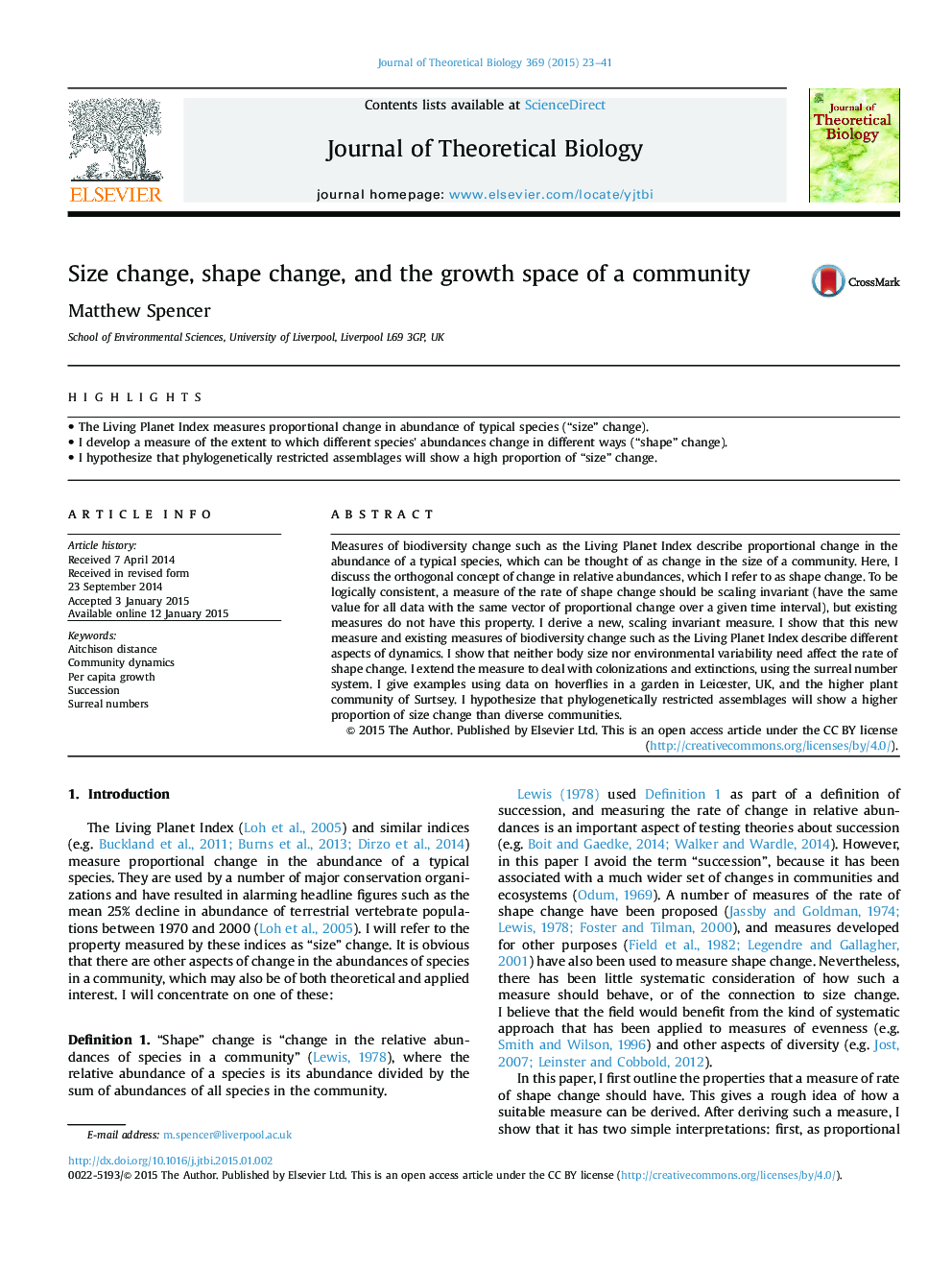| Article ID | Journal | Published Year | Pages | File Type |
|---|---|---|---|---|
| 6369954 | Journal of Theoretical Biology | 2015 | 19 Pages |
â¢The Living Planet Index measures proportional change in abundance of typical species (“size” change).â¢I develop a measure of the extent to which different species' abundances change in different ways (“shape” change).â¢I hypothesize that phylogenetically restricted assemblages will show a high proportion of “size” change.
Measures of biodiversity change such as the Living Planet Index describe proportional change in the abundance of a typical species, which can be thought of as change in the size of a community. Here, I discuss the orthogonal concept of change in relative abundances, which I refer to as shape change. To be logically consistent, a measure of the rate of shape change should be scaling invariant (have the same value for all data with the same vector of proportional change over a given time interval), but existing measures do not have this property. I derive a new, scaling invariant measure. I show that this new measure and existing measures of biodiversity change such as the Living Planet Index describe different aspects of dynamics. I show that neither body size nor environmental variability need affect the rate of shape change. I extend the measure to deal with colonizations and extinctions, using the surreal number system. I give examples using data on hoverflies in a garden in Leicester, UK, and the higher plant community of Surtsey. I hypothesize that phylogenetically restricted assemblages will show a higher proportion of size change than diverse communities.
